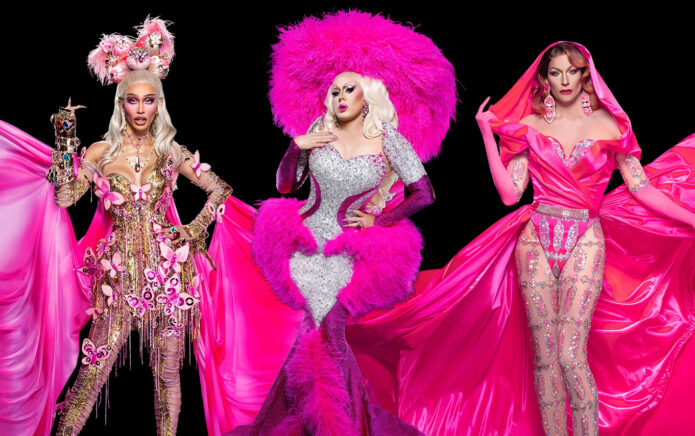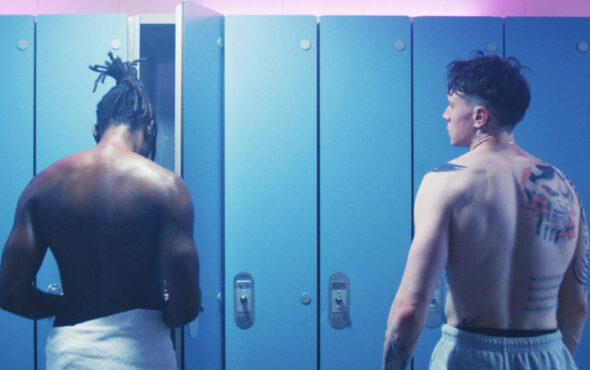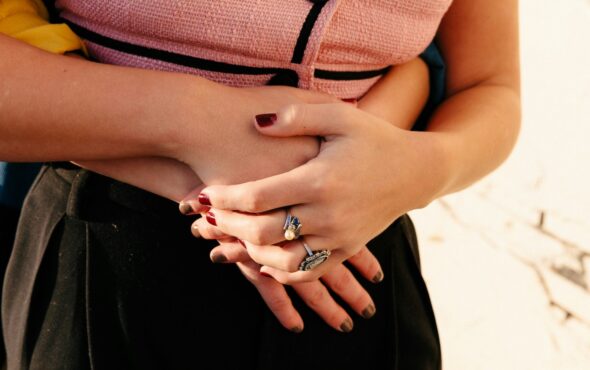
“t4t is a promise. You just promise to love trans girls above all else. […] We aim high, trying to love each other and then we take what we can get. We settle for looking out for each other.”
– Torrey Peters, Infect Your Friends and Loved Ones
You might have seen the phrase ‘T4T’ in trans people’s dating apps bios, or perhaps you’ve come across it in the tags of an Instagram post, a TikTok video, or even fan fiction on Archive Of Our Own.
T4T stands for “trans-for-trans” and usually refers to romantic and/or sexual relationships between trans people – though, like lots of the language trans people use, it’s an expansive term rather than having a strict definition.
If you’ve ever wanted to understand more about T4T relationships, or wondered why some trans people are explicit about not dating cis people, please read on.
Origins of T4T
Before T4T was popularised on dating apps and social media, it was used by trans folks searching for intimacy during the dawn of the digital age. As explained in ‘The t4t issue’ of Transgender Studies Quarterly, the term arose in the context of early 2000s Craigslist personals — with the “t” (rather than “m” for “man” or “w” for “woman”) allowing for trans and non-binary people to describe genders and sexes that cannot be neatly summed up within the gender binary.
But just as the term has outlived Craigslist personals, the idea of trans people being drawn into relationships with other trans people long precedes it.
Dr Liz Powell, a licensed psychologist who specialises in non-traditional relationships (and who is genderqueer themself) says that trans people get each other, see each other. We already have a shared set of language, experiences, and frameworks for talking about sex and our bodies.
Powell adds there is “this kind of shared experience, this shared bond from having been part of this [marginalised] group that is unique to a T4T relationship.”
M, a 41-year-old, non-binary trans guy agrees. His current relationship, which is T4T, makes him feel “very seen and understood”.
There’s also a gender-affirming aspect to the dynamic. “I’m not worrying that I’m being put in a particular role in my relationship due to my gender,” M explains. “I don’t worry that any part of my anatomy will make my partner think of me as ‘really’ some other gender than what I am.”

Safety and space for self-discovery
For many trans people, T4T relationships provide a space where they don’t have to play the role of educator – which can be exhausting, especially in the context of a romantic and/or sexual relationship.
“I trust trans people around the messiness of my gender way more than I trust any cis person,” Powell says.
They have more space and freedom to explore and be playful with their gender with other trans people, because they know “they are handling it with a care and a gentleness and an awareness that a lot of cis folks just don’t have.”
That care and awareness is invaluable for being able to figure out that you are trans. Jason, who is 43 and describes themselves as genderqueer and non-binary, explains that being with a trans person was invaluable for exploring their own gender. “I’m not sure I would have ever given myself space to be queer if I didn’t have this relationship to help me through self-doubt,” they say.
“I can handle some degree of embarrassment or awkwardness as part of the learning process with cis people, but that doesn’t mean it doesn’t hurt”
Fi, who is 40 and a femme-of-centre, non-binary trans woman, values the common context between trans people. “[Cis people might not have] the immediate, visceral understanding about why I wouldn’t want to risk going into a specific restroom and would want to find another one, for example, or why I might be crabby or grumpy the day before my HRT shot,” Fi explains.
Safety plays a huge role in trans people choosing to date and have sex with each other. Dating another trans person means you know they’ve already dealt with – or are at least aware of – the safety issues trans people have to constantly consider. But it’s also about being able to show up as your truest self. As Powell explains, it is less likely that trans or non-binary people will “round down” your gender to make themselves more comfortable, for example, or hide your transness from people in their life.
Brielle Bright, a 37-year-old woman, explains, navigating relationships with cis people can lead to invalidating scenarios. “I can handle some degree of embarrassment or awkwardness as part of the learning process with cis people, but that doesn’t mean it doesn’t hurt, even when it’s well meaning.” And, as she points out, it’s not always well meaning, which “immediately puts us in danger of abuse or assault.”
That shared context and understanding is so important. Although they’re polyamorous, Fi doesn’t seek out cis people to date. “The amount of education and explanations I think would be needed takes all the joy out of it for me.”
Joy in T4T relationships
Trans people can find unparalleled joy and intimacy in T4T relationships.
“In relationships with trans people, I often feel like I’m healing and being healed. I need and am needed. I’ve never experienced closeness like that outside of T4T relationships,” Brielle explains.
There is also beauty in trans people choosing to build relationships (and gendered roles within those relationships) that work for them – rather than conforming to the cis-heteropatriarchal scripts of what these ‘should’ look like.
“I value a partner who has taken some of the cultural assumptions about sex and gender and identity and broken them down in order to rebuild them,” Jason says. “[This is] inescapable as a trans person; taking the stories you were given about gender and figuring out what to do with them is something we’re all forced to do.”
“Seeing how hot other trans people are can be one layer of validation”
And then there’s the undisputed fact that trans people are hot. Siobhan McManus, a 41-year-old trans woman, notes that intimacy with her trans partner allows them to celebrate their bodies. “We understand each other in the challenges we face, the eroticism we share, because in my encounter with her body I don’t feel bad about mine – quite the contrary.”
Powell says that many trans people have encountered the false narrative that if you transition, no one will want to have sex with you – while in their experience, the reality is that many trans people actually end up having more sex after coming out.
“A lot of us have a fear of being undesirable, unwantable or unlovable if we ‘become’ trans, because [transness is seen as] bad and gross and icky and terrible,” they say. “That’s just not true. Seeing how hot other trans people are can be one layer of validation, and seeing a hot person think that you’re hot can be another layer of validation.”
Siobhan adds that she and her partner also find joy in being able to escape “the cis-sexist surveillance” of their bodies and from a society that judges people for not being ‘sufficiently’ a man or a woman. “I think that’s what draws us to each other. We’re a refuge for each other in a particularly hard moment in trans history.”

T4T beyond sex and dating
Amid ongoing legislative attacks on trans rights and heightened transphobia in the media, the term ‘T4T’ has taken on new, broader definitions as trans and non-binary folks strike up networks of care, support and friendship between one another.
Trans people showing up for each other is far from new, but intentional community has never been more important. “In this boom in transphobia, I believe these connections of friendship and care between many trans people have become much more important,” says Siobhan.
Fi has seen this solidarity in action when it comes to helping other trans people find work. “We tend to experience a higher than equitable rate of unemployment and general fuckery around being fired unjustly, so taking a proactive stance to help each other find employment when we need it has been invaluable to most of my friends.”
“Loving another trans person gives you strength”
With the proliferation of anti-trans legislation across the USA, and the continual disintegration of trans healthcare in the UK, trans people are increasingly relying on community care. M has helped people find where to get cheap needles, and Brielle has helped (and in turn been helped by) others to find DIY hormones and medications when local access to care doesn’t exist.
Mutual aid and community care is a powerful tool of resistance – and it’s one that can be incredibly rewarding. Last year, M flew from San Francisco to New York to support a friend who was having top surgery and didn’t have anyone local who could stay with him. “I went to the hospital with him, made food, helped him shower,” M recalls. “I was really happy that I could do that for him.”
T4T relationships and solidarity can pushes back against the idea that trans people are unlovable or that they are alone in the face of anti-trans violence. Whether it’s for sex or mutual aid, trans people connecting with each other is both joyful and powerful.
As Siobhan puts it: “Loving another trans person gives you strength.”



